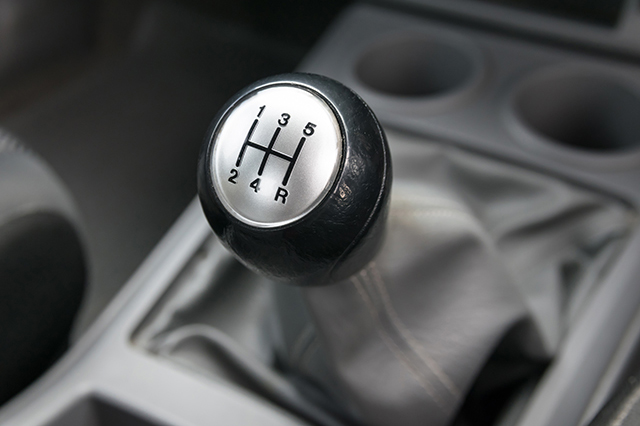For a lot of drivers, picking sides in the manual vs. automatic transmission debate is an easy call.
The domestic auto market has skewed heavily toward automatic transmissions in recent decades. Many drivers prefer the ease of driving vehicles with automatic transmissions, and the fuel economy ratings of automatic transmissions have caught up with those of manual transmission vehicles.
But there are those who still enjoy the experience of driving a standard. It’s why so many high-end sports cars come with a stick.
“It’s just more fun to drive standard. To make a perfect shift without missing a step, it’s Zen-like,” said John Paul, AAA Northeast’s Car Doctor.
Here’s a look at manual vs. automatic transmissions.
What’s a transmission?
Both manual and automatic transmissions connect a vehicle’s wheels with power generated in the engine. A transmission houses several gears in a gearbox. These gears leverage engine power based on need. Whether it’s driving uphill at low speed or on flat terrain at high speed, a transmission uses a gear configuration to maintain a safe, functional engine speed.
It’s the same principal as any multi-geared bicycle.
What do you mean by engine speed?
Engine speed is judged by revolutions per minute. It refers to the rate at which the engine crankshaft is moving. You can track RPM by looking at the tachometer. It’s the gauge on a vehicle’s dashboard that isn’t the speedometer. Take the number the needle indicates and multiply it by 1,000 to get an idea of how hard your engine is working.
Are certain RPM better than others?
Yes. There is a reason the top numbers of rpm gauges are highlighted in red. Operating an engine at such speeds – sometimes referred to as redline speeds – for extended periods of time is dangerous, and can lead to engine failure. The ideal operating range for most engines is about 2,000 to 3,500 RPM, or somewhere above two and below four on your gauge.
What does this have to do with transmissions?
A transmission maximizes your vehicle’s performance without forcing your engine to operate at unnecessarily high rpms.
Does my car have an automatic transmission?
Does your vehicle have a clutch pedal to the left of the brake?
No.
Then yes, you have an automatic transmission.
And what exactly does that mean?
Drivers don’t shift the vehicle’s gears. It’s done automatically through a (very) complex process. For introductory purposes – this is Car 101, after all – automatic transmissions are controlled primarily through hydraulic pressure and, in most vehicle models 10 years old or younger, a computer.

What’s a manual transmission?
Manual transmissions require drivers to shift gears with a clutch pedal and shifter. As a vehicle’s rpm rise, drivers facilitate a gear switch by stepping off the gas pedal, pressing down on the clutch and shifting one gear up or down before reapplying the accelerator and simultaneously disengaging the clutch.
Sounds complicated.
It’s not so bad once you get used to it, though convenience is one of the biggest reasons automatic transmissions have come to dominate the domestic auto market.
Is it as complicated to explain as automatic transmissions?
It’s simpler. Here’s a quick explanation.
A vehicle with a manual transmission has a flywheel connected to its crankshaft. It also has a clutch disc, which rotates with the flywheel when pressed against it.
The clutch disk is connected to the transmission’s gearbox through a gearbox shaft.
When the flywheel and clutch disk are connected, spinning together, the gearbox shaft does so as well.
When the clutch is pressed, however, a pressure disc disengages the gearbox shaft from the flywheel and clutch disc, cutting off the flow of energy from the engine to the transmission.
This temporary disengagement allows drivers to change gears using the shifter.
Once the clutch is disengaged, the pressure disc allows the gearbox shaft to reconnect with the clutch disk, but energy must be ready to turn the mechanism, which is why you must simultaneously reengage the accelerator when disengaging the clutch.
Are there any types of vehicles that are more likely to have a manual vs. automatic transmission?
High-end sports cars are where you’ll most likely find manual transmissions these days, though they remain quite popular across makes and models in Europe. If you’re traveling abroad and plan to rent a car, it’s a good idea to find out before you travel if your vehicle is a standard.
I know someone who had to get his vehicle’s clutch replaced. Is that rare?
Nope. It’s common, and something about the manual vs. automatic transmission debate worth noting. A clutch is a wear and tear item and its life depends on how a driver treats it. Someone who regularly brakes hard will wear down a brake pad more quickly than someone who gently applies the brakes. Someone who is constantly missing gears while shifting will likely need a clutch replacement at some point in a vehicle’s life while more experienced drivers who operate smoothly may never need a replacement.
My vehicle has a shifter but I don’t have to use it.
You’re talking about a direct shift gearbox, also known as a DSG transmission or, in some cases, a manumatic, and another part of the manual vs. automatic transmission discussion. In place of a clutch pedal, vehicles with such DSG transmission use an electronically controlled dual clutch.
By dual clutch, you mean two clutches?
Yep. Dual clutches have two clutches that are activated based on whether you’re in an even- or odd-numbered gear.
Why would I use a shifter if I don’t have to?
Some drivers prefer DSG because it enables quicker shifting. Drivers looking to maximize fuel long held manual transmissions in high regard. In recent years, however, fuel economy ranges have moved closer.
So there’s manual, standard and DSG transmissions. Anything else?
Yes. Continuously variable transmissions, or CVT. These are automatic transmissions that use belts and pulleys. They’re popular in Nissans, and increasingly popular in Subarus. The idea of CVT is that there is an infinite number of positions that can be leveraged to ensure ongoing performance while limiting engine stress.
What does transmission fluid do?
In an automatic transmission, transmission fluid is used for lubrication and generating hydraulic pressure that helps signal when it’s time for a gear change. In CVT and manual transmissions, fluid is primarily used for lubrication.
Do I need to get my transmission fluid replaced?
Like any fluid, you should follow your owner’s manual suggestion on the best time to get your fluid replaced.
I’ve heard transmission work can be expensive.
It’s true. No matter manual or automatic transmission, transmissions can be hard to reach and the systems contain many parts. It’s not unusual to see transmission repairs costing $1,500 or more, depending on the issue.
Any other questions about the difference between manual and automatic transmissions? Let us know in the comments.
2 Thoughts on “Car 101: Manual vs. Automatic Transmission”
Leave A Comment
Comments are subject to moderation and may or may not be published at the editor’s discretion. Only comments that are relevant to the article and add value to the Your AAA community will be considered. Comments may be edited for clarity and length.
















You left out one – if not the biggest – reason for choosing automatic over manual. When stuck in traffic – which most of us are now confronted with on a daily basis -Having a manual transmission where you need to constantly hold and release the clutch is a major pain. It actually can be tiring in extreme situations. I’ve owned both and prefer stick shifts, but stay away from them for only this reason.
Oh yes! I remember my left thigh aching in traffic jams thanks to the clutch. Thanks for the (painful) memory! 😉
– Dana